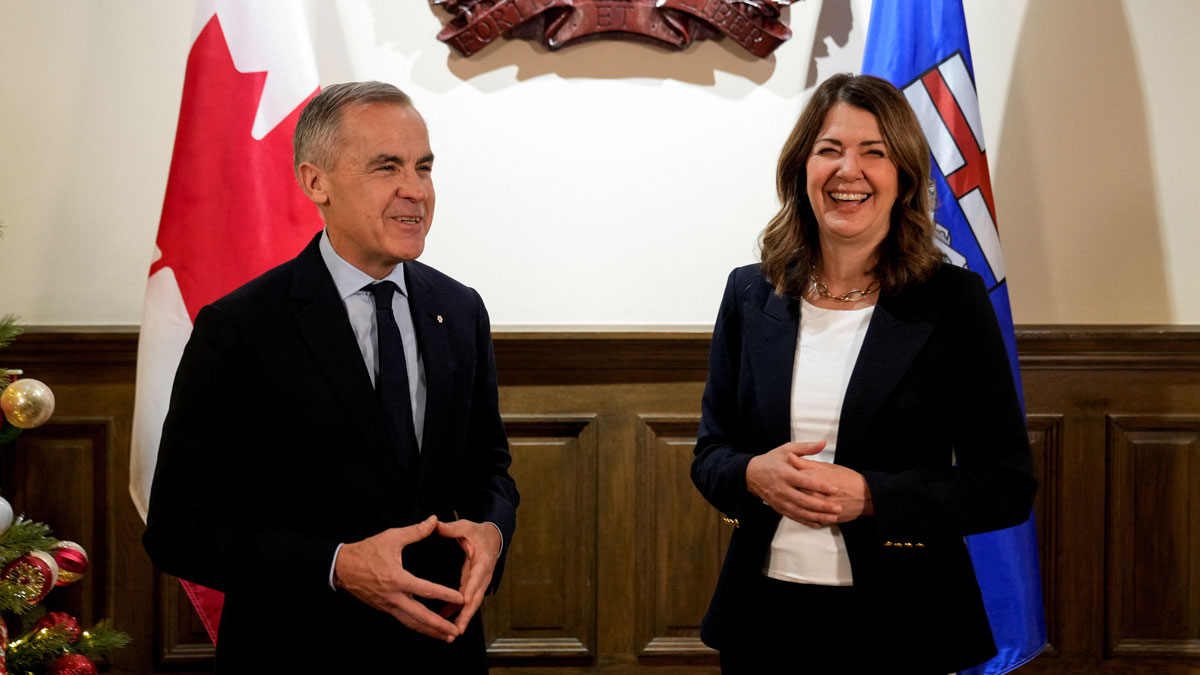Wall Street sees profits in a heating planet
- "Climate-change investing" has generally meant investing in technologies to prevent or mitigate global warming. But companies also are seeing profit in helping people adapt to a hotter, drier and more stormy world.
- Investor funds are flowing into agricultural technology companies that aim to coax more from less fertile soils or avoid growing food in soil altogether.
- Drugmakers see more profits in treating infectious diseases, while appliance manufacturers are betting big on the need for more air conditioning.
- The tagline for one investment firm: "Never let a good crisis go to waste."
Ahead of the United Nations climate summit starting Monday, many companies are touting their own contributions to confronting global warming and emphasizing the investment benefits of clean energy.
But climate-change investing doesn't only mean investing in technologies to avoid warming. Increasingly, companies are developing strategies to capitalize on the potentially seismic impacts on both the environment and humanity that are expected to accelerate unless people swear off fossil fuels in the next decade.
A hotter, more extreme climate can mean more profits in cooling homes, managing scarce water, building seawalls against rising water levels, and coaxing food crops to grow in drier, less fertile soil.
"Essentially, when you're talking climate change, you're talking everything. It's going to disrupt where we live and where we produce and how we eat," said Joe Brusuelas, chief economist at the corporate auditing and accounting firm RSM.
Hotter weather, cooler air
Take heat. The record-breaking heat waves across the U.S., Europe and Asia this summer have been a boon for makers of air conditioning, and Wall Street has poured more money into this industry. Share prices of the largest AC manufacturers — Johnson Controls, United Technologies and Ingersoll-Rand — have risen 25% this year, outpacing the S&P 500 stock index, which is up about 20% since January.
And the shift goes far beyond air conditioners.
"One thing I'm surprised that people aren't talking more about is feeding people," said Erik Kobayashi-Solomon, a longtime analyst with Morningstar and Morgan Stanley. "You can see the Midwest flooding this spring. There are these really profound impacts on the agriculture system with even this very limited amount of atmospheric warming."
Kobayashi-Solomon last year founded IOI Capital, an investment firm focused on technologies that adapt to and mitigate climate change. (Its tagline: "Never let a good crisis go to waste.")
"I'd never really put together my professional interest and this interest in climate change," he told CBS MoneyWatch. "And then last October, when [William] Nordhaus was awarded the Nobel prize [for climate research] at the same time that the International Panel on Climate Change put out a really strident report — that we essentially have 12 years to limit our emissions or we are literally cooked — suddenly it hit me. I'm in my fifties, I've not got a lot more runway. So in my last 20 years, I might as well do something where I'm helping out a little bit."
Kobayashi-Solomon hopes to one day offer a mutual fund focused on adapting to climate change. For now, he's scouting out early-stage startups to help finance. Among them is PrairieFood, which makes a soil additive that replaces synthetic fertilizer. He also has his eye on a slew of other fledgling firms in agricultural technology and urban farming. Those include Agrinos, which uses microbes as fertilizer, as well as AeroFarms, Growing Underground and GrowUp Urban Farms, which focus on growing food in spaces that don't rely on soil or sunshine.
Meanwhile, chemical conglomerates like Syngenta look at a future of drought and see more profit for engineered crops that can grow in high-stress conditions, according to company data shared with the U.K.-based nonprofit CDP, formerly known as the Carbon Disclosure Project.
Build the (sea) wall
A top investment strategist at JPMorgan caused a stir last year when he predicted that dramatically rising sea levels that threatened 40% of the U.S. population also created investment opportunities in sea walls. Putting such a barrier around parts of New York City and New Jersey could cost the equivalent of nearly $3 million per yard, he wrote. (New York's Staten Island recently secured funding for a $615 million stretch of wall.)
Many smaller cities that lack New York's resources will have to pay for their protections with bonds, or fund entire projects privately, the JPMorgan note said. That's an opportunity for the builders and investors who'll buy those municipal bonds.
Bugs of all kinds
One effect of warming air is a wider habitat for pests and the infectious diseases they often carry. That means more money to be made treating or preventing those diseases.
"Some companies that are in business of treating infectious diseases, or making vaccines, are seeing more profits because of greater demand," said Bruno Sarda, North America president for CDP.
Sarda noted that the rise in heat-related health issues, as well as the decline in freezing winters that act as a check on disease, are both increasing the need for health care services. "All of that will put more stress on health systems in general. Some companies profit from it," he said.
CDP runs a platform for companies to disclose their business costs and opportunities related to climate change. This year, some 215 global companies collectively listed over $2 trillion in potential profit — more than double the total amount they predicted they could lose as the planet warms.
Among those profiting: Drugmakers Merck and GlaxoSmithKline see bottom-line boosts from treating the spread of malaria, which has been creeping northward along with hotter air.
Eli Lilly, which made $10 billion in sales from diabetes medication in 2017, told CDP that "climate change may increase the risk of diabetes in certain populations by curtailing physical activity, disrupting traditional food supplies, and increasing food insecurity. That would "drive an increased demand for diabetes education and awareness and for our diabetes products," the drugmaker added.
Changing course
Adapting to life on drier land and with hotter air will require not just a whole new suite of essential products for residents of wealthy countries in the Northern Hemisphere, but also a rethinking of where those goods are made and how they're transported.
Many of the locations that today manufacture goods chiefly destined for the West, such as southeast Asia, are experiencing increasingly severe storms and flooding. Back in 2011, flooding in Thailand that killed hundreds of people also hit factories that created computer hard drives, crimping supply and driving up costs for consumers in developed countries. Two years ago, meanwhile, flooding from Hurricane Harvey crippled FedEx operations for several days and shut down oil refineries in Louisiana and Texas.
"Supply chains and value chains are highly optimized for costs and efficiency, but not necessarily resiliency," said CDP's Sarda. "How do you change the system, where you move something 60 times before you have a finished product, knowing that any one of those 60 times can be disrupted?"
To deal with such challenges, Sarda said, manufacturers are learning to source raw materials from multiple places and creating backup locations where specific goods can be made. Others are reconsidering their use of raw materials altogether. Apple is working toward making an entire product line from recycled materials, which leaves it less exposed to fluctuating materials prices and escalating trade wars. Chip maker Intel is reducing its use of water, aiming for "net zero" new water usage by 2025.
"Manufacturing is really figuring out how to close the loop and not be so reliant on virgin materials, whether it's timber from forests or mined metals or even water," Sarda said.





